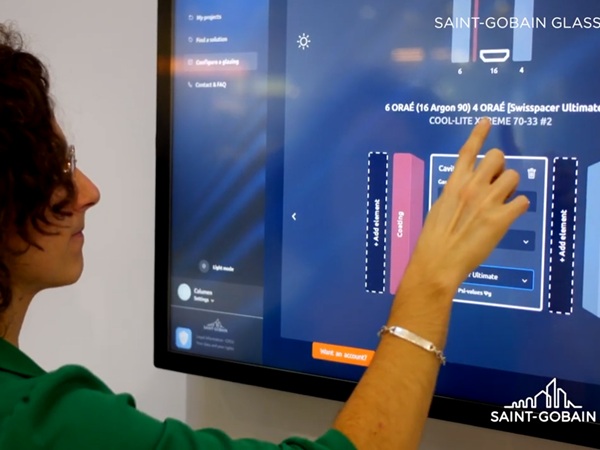Date: 11 August 2014
How do you see the spacer market developing, Dr. Lingens?
Dr. Albert Lingens, Sales Director for Thermix at Ensinger in Ravensburg: Since Thermix was launched as one of the first thermally optimized spacers for insulating glass in the early 1990s, warm edge solutions have established a clear lead over traditionally used aluminium: In Germany, around 60 per cent of all insulated glazing units are produced using this type of system. With energy-saving requirements on the increase, and given the growing proportion of triple glazed units being sold, demand is set to increase still further.
Glaswelt: But at the same time, the number of suppliers offering warm edge solutions has also increased. Today, insulating glass manufacturers can choose from a variety of systems to minimize thermal bridge effects at the edges of windows.
Dr. Lingens: The growing competition has played an instrumental role in ensuring that warm edge systems have improved not only thermally but also as regards processability. Alongside rigid spacers, there are also flexible systems available which are applied off the roll or from containers.
Glaswelt: What do you consider to be the strengths of rigid warm edge systems?
Dr. Lingens: Rigid spacers can be processed without major investment or employee training using conventional assembly lines. This has simplified the increasing changeover from aluminium to warm edge solutions. The availability of profiles which can be bent when cold and therefore at high speed, and the large range of automation solutions available for processing make for a high level of productivity. Due to the diversity of rigid spacers and proven sealing materials, insulating glass manufacturers are able to ideally adjust to the needs of their customers.
Glaswelt: And what is your view of flexible solutions?
Dr. Lingens: In terms of their thermal properties, they are comparable. The difference lies in the processing. The desiccant is already integrated in the soft material. However, this process simplification is also reflected in the price. When setting up a new line, more space is frequently required, and in the case of thermoplastic systems, more energy is used than with a conventional line. And finally, although a higher degree of automation requires fewer employees, they have to be more highly qualified. Whether this makes financial sense as an overall package is something every producer has to work out for itself.
Glaswelt: Insulating glass manufacturers who process flexible systems could say more on the subject. But even they will rarely dispense with a conventional production line. Why is that?
Dr. Lingens: There are a number of reasons why, such as customer requirements, a uniform appearance with mounting muntin bars, the existing machine outfit, staff qualifications, size of the production hall and so on. Unlike flexible spacers, rigid warm edge systems are produced by a large enough number of suppliers to preclude any chance of dependency on a single one. Or perhaps they just want to keep this option open.
Glaswelt: Customers are demanding thermal insulating glazed units in ever greater dimensions, and there is a particular surge in demand for structural glazing of entire building facades. Rigid spacers are supplied in lengths of up to 6 metres, while flexible ones are practically continuous. Are there any restrictions in terms of formats?
Dr. Lingens: Not because of the spacers themselves, but only because of the available processing machinery. It has always been possible to supply rigid profiles with pre-inserted connectors. The parts are then automatically joined at the bending station. This allows the spacers to be extended ad infinitum. With pressure glazed systems of the kind frequently used for large glazed surfaces, rigid spacers are very much in demand due to their stability and extreme dimensional accuracy. They are also suitable for sealed units with a very wide gap, and are stainless steel wrapped on the back and the flanks. This achieves not only a very low thermal transmission coefficient but also a reliably durable gas-tight seal. We actually offer a product warranty of ten years on Thermix TX.N plus spacers and Thermix muntin bars.
Glaswelt: Dr. Lingens, thank you for taking the time to talk to us.








Add new comment